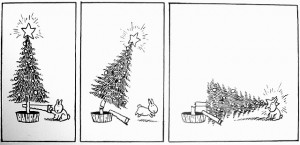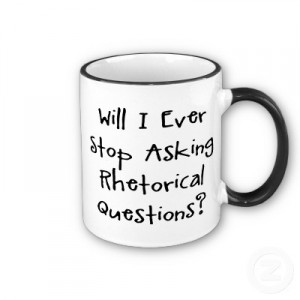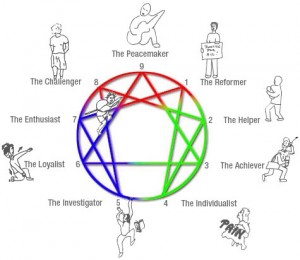The Language of Narration
Descriptive Language / Aesthetic Language

Narration literally means to tell a story. Plot, setting & characterization = 3 key elements.
Descriptive language creates a clear picture in your mind of what is being described.
Aesthetic language is beautiful, artistic & carefully crafted with a poetic rhythm & flow.
Genre – novels, short stories, memoirs, personal essays, diary entries, travel writing and poetry all make use of narrative, descriptive and aesthetic language. Speech writers and journalists writing articles often use these techniques in their writing.
Target audience – anyone who reads for pleasure and out of curiosity to know more about life, the world and human beings (rather than simply to find out information or to argue a point of view). Your audience wants to be entertained, thrilled, shocked, angered, made to laugh out loud or to cry silently into their coffee, provoked into thinking about life as a ridiculous joke, or as a wonderful dance, or as a tragic tale “full of sound and fury, signifying nothing”.
Language register – depends on the writer and the style of writing. If it’s a novel, play, short story or diary entry you can use slang and curse words, especially in dialogue, but keep it to a minimum. If it’s a personal essay, poem, piece of travel writing, speech or newspaper article it’s best to avoid cursing and slang (unless quoting someone).
Techniques: Narration
PLOT =
Stories are expected to have a clear beginning, middle and end (not necessarily in that order!). Something must happen in your story, but take a short time span and don’t have LOTS of dramatic events happening in a short story. Tension & suspense can be created by leaving some questions unanswered in the reader’s mind and then gradually revealing the truth. A sense of unity & closure is important. Avoid a predictable ending.
SETTING =
Clearly describing your setting allows the reader to imagine being in that place, allows them to mentally look around & see what the characters see. It also helps to create a specific mood & atmosphere.
CHARACTERISATION =
Readers get to know a character’s personality through what they say, what they do, how they look and from other people’s opinions & attitudes towards this character. These details need to be revealed gradually and to be worked naturally into the act of telling the story. You can also reveal their thoughts and feelings, which gives the reader a greater insight into the character’s true self. Only have 1 or 2 main characters to avoid confusion. Your reader needs to relate to the character on some level (to feel sympathy, fascination or amusement); the reader need to feel curious to find out more about them; and finally the reader must believe in the character – must understand what motivates them and feel that their actions, statements and thought processes are convincing and true to life.
NOTE:
* Writers generally use the PAST TENSE when describing something – but recently quite a few successful novels have been written in the PRESENT TENSE (The Hunger Games, Skippy Dies) as it creates a dramatic immediacy for the reader. The important thing is to pick a tense and stick with it.
* Narrative writers use all the techniques of descriptive writing.
* Anecdotes (a short tale narrating an interesting or amusing biographical incident) use narrative techniques in the space of a few lines. Here’s an example:
“Cary Grant is said to have been reluctant to reveal his age to the public, having played the youthful lover for more years than would have been appropriate. One day, while he was sorting out some business with his agent, a telegram arrived from a journalist who was desperate to learn how old the actor was. It read: HOW OLD CARY GRANT? Grant, who happened to open it himself, immediately cabled back: OLD CARY GRANT FINE. HOW YOU?”
Techniques: Description (vivid imagery)
Vivid imagery literally means that the words create a clear picture in your mind, using:
VERBS =
Action words, which show what is happening, what someone is doing e.g. “Suzie bounces over, screaming with excitement“. To paraphrase Orwell, ‘all verbs are active, but some verbs are more active than others’. Your verbs need to be specific. They need to work hard if they are going to successfully add energy and excitement to a sentence. For example, the sentence above wouldn’t be nearly as effective if it said “Suzie walks over and says she’s really excited“.
ADJECTIVES =
Words which describe the noun eg. “a heavylowgrey cloud loomed on the distant horizon”. In this sentence the cloud and the horizon are the nouns being described.
ADVERBS =
Words which describe the verb eg. “the cloud loomed menacingly, then burst suddenly. Freezing raindrops immediately soaked through my flimsy nightdress”
In this sentence ‘loomed’ ‘burst’ & ‘soaked’ are the verbs whose action is described.
SIMILES =
To compare two things using the word “like” or the word “as”. A really good simile draws an unexpected connection between two things and helps us to see the thing being described in a new light. For example, Muhammad Ali used a simile to describe the art of boxing: “float like a butterfly, sting like a bee”. This is considered a brilliant comparison because it asks the reader to consider boxing as a sport that requires agility, speed, precision and a lightness of foot. Traditionally people viewed it as a violent aggressive lumbering sport, but this simile asks them to view it in a new light.
Similes can be ironic or sarcastic, often creating a humorous effect: “as subtle as a sledgehammer” “as elegant as a dead cat” “his touch was like the cool caress of sandpaper”. The following description deliberately contradicts the idea that the person being described is praiseworthy (or genuinely nice, or kind, or dependable):
“He’s nice. Like tissues when your nose is runny. He’s kind. Like your granny giving you 50c for sweets when what you really need is six quid for fags. He’s dependable. Like that old pair of tatty grey knickers you wear when everything else is in the wash”.
Less impressive similes are ones that have been used so often they have become clichés
Eg. ‘As blind as a bat’, ‘howl like a hyena’, ‘as black as coal’, ‘sweet like chocolate’.
METAPHORS =
Make a direct comparison, saying something IS something else. Eg. “all the world’s a stage” “you’re my own personal Jesus” “her face was a knotted tree trunk of misery”
Like similes, metaphors can be used for comic effect. The following extended metaphor is deliberately hyperbolic/sarcastic: “This is a crisis. A large crisis. In fact, if you’ve got a moment, it’s a twelve-story crisis with a magnificent entrance hall, carpeting throughout, 24-hour porterage and an enormous sign on the roof saying ‘This Is a Large Crisis.'”
Less impressive metaphors are ones that have been used so often they’ve become clichés: eg. “they broke the ice” “take the bull by the horns” “she was an angel in white”.
EVOKE 5 SENSES =
Really good descriptive writing doesn’t just describe SIGHTS, but also SOUNDS SMELLS and less often TASTE and TOUCH. This gives the reader a fuller experience in their imagination, because in real life we experience the world through all 5 senses.
eg “the church bells chimed loudly to remind us that life would continue on as normal, but the foul taste of smoke in my mouth and the rancid smell of burning flesh suggested otherwise. I winced as the nurse wound a bandage around my mangled leg, the openwound throbbing at her gentle touch”.
SYMBOLISM =
Where a word/object has a deeper meaning above and beyond its dictionary definition. A beautiful house filled with dirty dishes & grime could be a symbol of a characters’ depression. A storm could be a symbol of a troubled mind. A flower in spring could symbolise a new beginning. A candle in a dark room could symbolise hope. This allows reader & writer to see and appreciate a deeper meaning beyond the obvious.
PERSONIFICATION = Describing an object as though it is alive. Giving it human qualities. This is effective because it makes the writing buzz with life, Eg “The teddy bear sat slumped on the bed, looking sadly at its feet.” “this computer loves to torture me” “death stalked the town, seeking newer victims”.
Techniques: Aesthetic language
Aesthetic language involves using words artistically, in the same way that painting involves using paint to create something beautiful/artistic/memorable. Writers pay attention not necessarily to what they want to say, but focus more on how they say it.
Poetry is the most obvious example of aesthetic language, but all types of writing aim to appeal aesthetically to the reader. Remember, the message can be ugly but the writing beautiful eg “sing a last song for the lady who has gone, fertile source of guilt and pain”
All of the devices used in descriptive writing (see above) and those listed below add to the aesthetic value of a text.
REPETITION = A word/phrase is deliberately repeated to emphasise its importance.
“I dream of tomorrow, I dream of an end to sorrow, I dream of peace”
CONTRAST = Placing opposites side by side to point out the differences between them and the unique characteristics of each:
“her poisoned blood stained the pure white snow”
HYPERBOLE = Deliberate exaggeration. Makes writing more dramatic or humorous.
“I’ve had a thousand chances & I’ve flushed every one down the toilet”
RHETORICAL QUESTIONS = Writer asks a question but doesn’t expect a response (or the answer is obvious). Is this used to grab the readers attention?
EMPHATIC WORDS = words which imply absolute certainty. Used to make us trust the writer – they must have a reason for being so sure of themselves! Now, never, always, forever, all, every, none, nothing, any, must, certainly, absolutely, definitely, honest(ly), truth/true/truly, the one, the only, yes.
LISTS / TRIADS = reader feels overwhelmed with info & finds it hard to disagree/resist.
“the fear and pain and poverty and hardship hit you like an oil tanker”
ALLITERATION = repetition of a letter at the beginning of a series of words eg “cruel cramped conditions” which attracts the eye and the ear.
ONOMATOPOEIA = words whose sound imitates their meaning: “buzz, screech, gulp”.
Hearing the sound of what’s described brings it to life for the reader.
Narrative / Descriptive / Aesthetic Language
Comprehensions:
What features of good descriptive writing are evident in this passage?
Would reading this extract encourage you to read the novel in full?
What kind of world has been created by the author in this extract?
Question B:
2014
Inspired by Seamus Heaney’s essay about the importance of objects from the past, your class has decided to organise an exhibition celebrating the significance of objects from childhood in the lives of well-known people.
Write the letter you would send to a well-known person, inviting him or her to contribute an object from his or her childhood and a written explanation regarding its personal significance. In your letter, you should explain the inspiration for the project and include, as an example, a piece you have written about an object from your childhood that is of significance to you.
2012
Write a letter to Margaret Laurence in response to Text 1, commenting on what you find interesting in the extract and telling her about your home place and its impact on you.
2011
Write a talk, to be delivered to your School Book Club, on the enduring appeal of the mysterious in books, films, etc. You might refer to some of the following aspects of the mystery genre in your answer: setting, tension, suspense, dialogue, characterisation, atmosphere, music, special effects, etc.
2011
Imagine you are Sarah, the young girl in Text 3 above. Based on your reading of this extract, write two diary entries, one shortly before and one shortly after your journey to Dublin.
2009
Imagine you are making a cartoon film (featuring animals as characters) either to promote or oppose zoos. Write the script of a scene (in dialogue form) between two of the animal characters.
2008
Write two diary entries: one written by Alexander, recalling his encounter with Eva in Tompkins Square Park and the second by Zach, giving his thoughts on hearing that Eva has purchased the violin.
2006
Imagine that, in an attempt to control his feelings, the boy writes into his diary an account of the incident and his reactions to it. Write out his diary entry.
2006
Write three diary entries that Margaret Ann might have written over a series of Saturday evenings.Your writing should relate to her experience as described in the passage.
2003
Imagine that you have discovered a time capsule containing a number of items from the distant or more recent past. Write a letter to a local or national newspaper announcing your find & describing the items in the capsule.
2003
You have been asked to give a short talk on radio about an interesting journey you have made. Write out the text of the talk you would give.
2002
Write three or four diary entries that record the details of a disastrous holiday (real or imaginary) that you experienced.
2001
Imagine your local radio station is producing a programme entitled Comic Moments in which a person from the community introduces his/her favourite moment from the world of radio, television or live performance. Write the text of the presentation you would like to make.
2001
Choose one of the people pictured in Text 4 and write 4 short diary entries that your chosen person might write on one important day in his/her life.
Essay Titles:
Short Story – every year there’s been at least one, and often two out of seven titles.
If asked for a story based on one of the images, you must say which image.
Personal Essay – every year there’s at least one.
Magazine Articles – some articles call for a very personal approach e.g. “Write an article about the beginning and ending of a relationship”
Descriptive essay – this appeared for the first time in 2011.
2013
Write a short story in which a central character is either manipulated or is manipulative.
2013
Write a short story about a reunion.
2013
Write a descriptive essay based on a variety of glimpsed moments.
2013
Write a personal essay in which you explore the storytelling evident in music and song and its impact on you as a listener.
2013
Write a personal essay about the tension you find between the everyday treadmill and the gilded promises of life.
2012
Write a short story inspired by the phrase “an inferior rock band howling for fame”
2012
Write a short story in which a young character is eager to leave home.
2012
Write a personal essay on what you consider to be the marvels of today’s world.
2011
Write a descriptive essay about twenty-four hours in the life of a town or city.
2011
Write a story to be included in a collection of modern fairytales.
2011
Write a short story in which a mystery is solved.
2011
Write a personal essay about your clothes, what they mean to you and what they say about you.
2010 + 2004 (performance)
Write a personal essay about your experience (as performer and/or audience member) of the dramatic arts: plays, musicals, concerts, comedy, etc.
2010
Write a short story in which two unusual or eccentric characters meet for the first time.
2009
Write an opinion piece for a popular magazine entitled “Indecision – my own and other people’s”.
2009
Write a short story in which a photograph, or a set of photographs, plays a part in the plot. Your story may be prompted by one or more of the photographs in TEXT 3.
2008
Write a short story in which the central character is a rebellious teenager (male or female)
2008
Write a personal essay in which you describe a place that you consider beautiful.
2007
Write a personal essay on the idealism and passions of youth.
2007
Write a magazine article (serious or light-hearted) entitled: “The Modern Shopping Centre”.
2007
Write an article for a popular magazine on the importance of the imagination.
2006
Write an article for a popular magazine on the importance of romance in our lives.
2005
Write a personal essay on the part which other people’s expectations play in our lives.
2005
Write a short story suggested by one or more of the images in TEXT 2.
2004
Write a personal essay in which you explore some of your earliest memories of childhood.
2004
“ ‘See you later, Paul,’ said one of the girls. There was a titter of laughter.”
Write a short story suggested by these words
2004 + several other years
Write a short story suggested by one or more of the images in TEXT 3.
2003
Imagine you are a member of Tim Severin’s crew on board the new Argo. Write a letter (or series of letters) to a personal friend or family member in which you describe some of your adventures.
2003
“…huge funds of energy but very little money.”
Using this as your title, write a personal essay.
2002
Write an article for a popular magazine or journal in which you explore the aspects of your own family that are special to you.
2002
“After the war” Write a short story inspired by this title.
2002
Write an article (serious or lighthearted) about the beginning and ending of a relationship in your life.
2001
Write a personal essay in which you explore your sense of what it means to be Irish.








